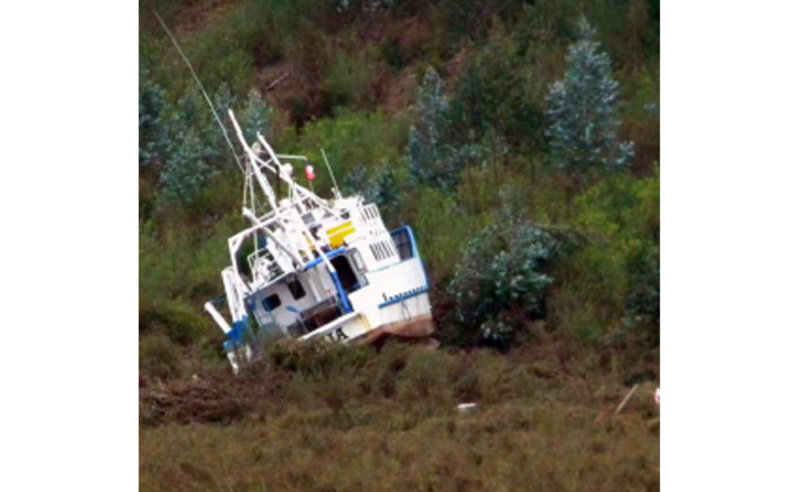
By Lisa Levin, Scripps Institution of Oceanography
March 9, 2010
On February 27 I went down to my cabin to nap before a load of core samples arrived on deck. It was after 3 a.m. and a long stretch of work remained. As I headed down, all was well. When I came back up 45 minutes later, however, things had radically changed. Central Chile had just experienced an 8.8 magnitude earthquake, one of the largest ever recorded. Over the next few days news trickled in over our frustratingly slow shipboard email system. My concern was for the people of Chile, but also for the many friends I had made in 1998 on sabbatical at the University of Concepción and the university marine lab in Dichato. The quake epicenter was only 70 miles from Concepción.
As communications resumed, I heard directly from some friends and indirectly about others. Most of the marine scientists I knew seemed alive and unhurt. The same was not true for marine science itself in Central Chile. Strangely enough, the tsunamis resulting from the quakes and aftershocks did the most damage.

The damaged University of Concepción Marine Laboratory in Dichato, Chile. The entire town was destroyed by tsunami waves following an 8.8 magnitude earthquake on February 27, 2010. Image courtesy of Ruben Escribano. Download image (jpg, 78 KB).
The wonderful marine laboratory at Dichato, where I had worked for one summer and returned to teach for part of another, was completely destroyed by a series of 3 tidal waves. The waves arrived 30 minutes apart during the first 2 hours after the initial quake. The loss of instrumentation, lab equipment, computers, samples, and countless hours spent generating data is catastrophic — and heartbreaking. Many of the top marine researchers at the University of Concepción made this laboratory their base of operations. Now only the side walls remain; most of the contents and parts of the roof are gone. The research vessel (R/V) Kay Kay II, the University’s 18 meter (59 foot) long ship was left high and dry nearly 1 kilometer (over 1/2 mile) inland. Although this ship could have been salvaged, vandals have apparently removed all of its instruments.
Of course, marine sciences at the main campus in Concepción also must be greatly affected. A week without electricity spells doom for sensitive samples in freezers. For some, this could mean a lifetime of collections lost, for others a PhD dissolved. Countless other consequences will undoubtedly emerge.
Oceanography and deep-sea science in Chile have been conducted for the past few decades by the R/V Vidal Gormaz, an ocean-class research vessel that was formerly Scripps Institution of Oceanography’s R/V Thomas Washington. This vessel docks in Valparaiso; its fate is currently unknown. I have a strong connection to this ship. My first research cruise (as a grad student) was on the Thomas Washington, in 1977; and I had the good fortune to sail twice on the Vidal Gormaz, in 1999 and 2000. This ship had recently reached the end of its science life in Chile and was being replaced by a brand new 70 m vessel, the Cabo de Hornos. The new ship, with world-class, state-of-the-art equipment, would work in south Chile and Antarctic waters. It was due to be launched on February 27, 2010 — just hours after the earthquake. Instead, a wave lifted and pounded it atop the dock onto dry land.

The research vessel Kay Kay II, belonging to the University of Concepción. The 18 meter (59 foot) long ship was washed 1 kilometer (over 1/2 mile) inland, following the February 27 earthquake. Vandals subsequently stripped the ship of its oceanographic instruments. Image courtesy of Ruben Escribano. Download image (jpg, 63 KB).
Our ability to conduct oceanography depends on access to research ships and field stations. The Chile quake has dealt a serious blow to both. We are fortunate here on the R/V Melville to have access to a fine ship, a fine crew, and safety from quakes, aftershocks, and tsunamis. Our Chilean colleagues on board are, for the moment, sharing in the delight and surprise of discovery on board. But they and others face a monumental task to rebuild and regrow the infrastructure needed for marine science to flourish in Central Chile. The Chilean scientists have been so generous to me in the past, I can only hope that marine scientists around the world will pull together to help them out.